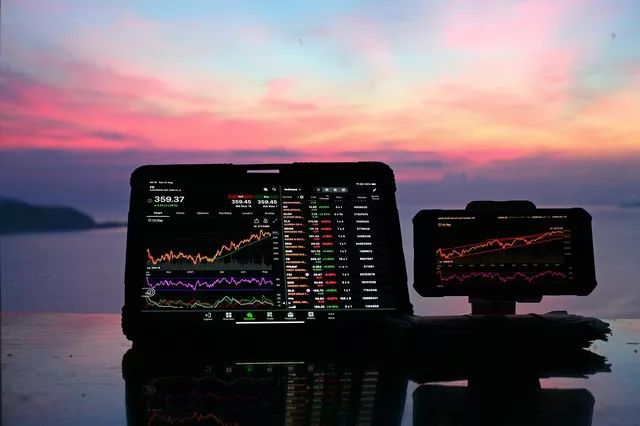314
Futures prices, the cornerstone of derivative markets, are influenced by a myriad of factors that create a dynamic and ever-changing landscape for traders and investors. Understanding the forces at play is essential for anyone engaging in futures trading. In this comprehensive guide, we delve into the various factors that can impact futures prices, exploring the intricate web of economic, geopolitical, and market-specific elements that contribute to price movements in the futures market.
Economic Indicators and Data
One of the primary drivers of futures prices is the economic landscape. Economic indicators, such as gross domestic product (GDP), employment figures, inflation rates, and interest rates, play a crucial role in shaping market sentiment and influencing futures prices. Positive economic data can boost confidence in the market, potentially leading to increased demand for futures contracts, while negative indicators may trigger concerns, leading to a decline in futures prices.
Geopolitical Events and Global Uncertainties
Geopolitical events, including political tensions, trade disputes, and global conflicts, have a significant impact on futures prices. Sudden changes in geopolitical dynamics can create uncertainty in the markets, leading to heightened volatility. Traders often respond to geopolitical news by adjusting their positions, leading to rapid price movements in futures contracts. Being attuned to global geopolitical developments is essential for anticipating potential shifts in futures prices.
Market Sentiment and Speculation
The sentiment of market participants, often driven by speculation, can exert a powerful influence on futures prices. Traders’ perceptions of market conditions, future trends, and potential risks play a pivotal role in shaping sentiment. Positive sentiment can drive buying activity, contributing to an increase in futures prices, while negative sentiment can lead to selling pressure and price declines. Monitoring market sentiment through technical analysis, news, and social media is crucial for traders seeking to anticipate price movements.
Supply and Demand Dynamics
The fundamental economic principle of supply and demand is a fundamental driver of futures prices. Changes in the balance between supply and demand for a particular asset can lead to price adjustments in futures contracts. Factors such as production levels, inventory data, and consumption patterns can influence the supply and demand dynamics for commodities, impacting their corresponding futures prices. Traders should closely monitor these fundamental factors to make informed decisions in the futures market.
Interest Rates and Monetary Policy
The interest rate environment and monetary policy decisions by central banks have a profound impact on futures prices. Changes in interest rates can influence the cost of borrowing, affecting the attractiveness of holding certain assets. Central banks’ decisions to raise or lower interest rates can lead to shifts in capital flows, impacting futures prices across various asset classes. Traders should stay informed about monetary policy decisions and interest rate trends to gauge their potential impact on futures markets.
Currency Exchange Rates
For futures contracts denominated in currencies other than the trader’s base currency, exchange rate fluctuations can be a crucial factor affecting prices. Changes in currency exchange rates impact the relative value of assets and can influence the competitiveness of exports or imports. Traders engaging in cross-border futures trading should consider the potential impact of currency movements on their positions and factor this into their risk management strategies.
Weather and Natural Events
In the case of commodities futures, particularly agricultural and energy commodities, weather conditions and natural events can significantly impact prices. Adverse weather, such as droughts or hurricanes, can disrupt supply chains and impact production levels, leading to potential shortages and price spikes. Conversely, favorable weather conditions can contribute to higher yields and increased supply, putting downward pressure on futures prices. Traders in commodities markets must stay attuned to weather forecasts and natural events to anticipate potential market movements.
Technological Advancements and Market Access
Technological advancements and improvements in market access have reshaped the landscape of futures trading. Electronic trading platforms, algorithmic trading, and high-frequency trading have increased market efficiency and liquidity. The speed at which information is disseminated and trades are executed can impact futures prices, especially during periods of high market activity. Traders leveraging technology should be aware of the potential impact of rapid order execution on price movements.
Government Policies and Regulations
Government policies and regulations can have a profound impact on futures prices, particularly in regulated markets. Changes in trade policies, tax regulations, or industry-specific regulations can influence market dynamics and create opportunities or challenges for traders. Additionally, regulatory developments related to market oversight and transparency can impact market sentiment and participants’ confidence in futures markets.
Market Liquidity and Trading Volume
Market liquidity, characterized by the ease with which assets can be bought or sold without causing significant price fluctuations, is a critical factor influencing futures prices. Higher liquidity generally leads to more stable prices, while lower liquidity can result in increased volatility. Trading volume, representing the total number of contracts traded, is closely related to liquidity and can provide insights into market activity and potential price trends. Traders should assess liquidity conditions before entering or exiting positions to avoid adverse price impacts.
Economic Cycles and Market Trends
Futures prices are often influenced by broader economic cycles and market trends. Economic expansions and contractions, as well as shifts in market sentiment, can contribute to the emergence of trends in futures prices. Recognizing and understanding these cycles can help traders identify potential entry and exit points, aligning their strategies with the prevailing market conditions.
Conclusion
In conclusion, futures prices are shaped by a complex interplay of economic, geopolitical, and market-specific factors. Traders and investors seeking success in the futures market must develop a comprehensive understanding of these influences to make informed decisions. By staying informed about economic indicators, monitoring global events, assessing supply and demand dynamics, and considering the impact of various external factors, traders can navigate the complexities of the futures market with greater confidence and agility.


